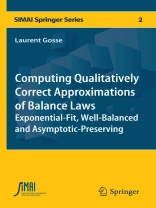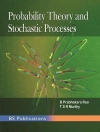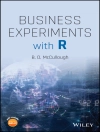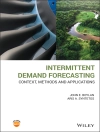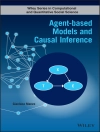Substantial effort has been drawn for years onto the development of (possibly high-order) numerical techniques for the scalar homogeneous conservation law, an equation which is strongly dissipative in L1 thanks to shock wave formation. Such a dissipation property is generally lost when considering hyperbolic systems of conservation laws, or simply inhomogeneous scalar balance laws involving accretive or space-dependent source terms, because of complex wave interactions. An overall weaker dissipation can reveal intrinsic numerical weaknesses through specific nonlinear mechanisms: Hugoniot curves being deformed by local averaging steps in Godunov-type schemes, low-order errors propagating along expanding characteristics after having hit a discontinuity, exponential amplification of truncation errors in the presence of accretive source terms… This book aims at presenting rigorous derivations of different, sometimes called well-balanced, numerical schemes which succeed in reconciling high accuracy with a stronger robustness even in the aforementioned accretive contexts. It is divided into two parts: one dealing with hyperbolic systems of balance laws, such as arising from quasi-one dimensional nozzle flow computations, multiphase WKB approximation of linear Schrödinger equations, or gravitational Navier-Stokes systems. Stability results for viscosity solutions of onedimensional balance laws are sketched. The other being entirely devoted to the treatment of weakly nonlinear kinetic equations in the discrete ordinate approximation, such as the ones of radiative transfer, chemotaxis dynamics, semiconductor conduction, spray dynamics or linearized Boltzmann models. “Caseology” is one of the main techniques used in these derivations. Lagrangian techniques for filtration equations are evoked too. Two-dimensional methods are studied in the context of non-degenerate semiconductor models.
Inhoudsopgave
Introduction and chronological perspective.- Lifting a non-resonant scalar balance law.- Lyapunov functional for linear error estimates.- Early well-balanced derivations for various systems.- Viscosity solutions and large-time behavior for non-resonant balance laws.- Kinetic scheme with reflections and linear geometric optics.- Material variables, strings and infinite domains.- The special case of 2-velocity kinetic models.- Elementary solutions and analytical discrete-ordinates for radiative transfer.- Aggregation phenomena with kinetic models of chemotaxis dynamics.- Time-stabilization on flat currents with non-degenerate Boltzmann-Poisson models.- Klein-Kramers equation and Burgers/Fokker-Planck model of spray.- A model for scattering of forward-peaked beams.- Linearized BGK model of heat transfer.- Balances in two dimensions: kinetic semiconductor equations again.- Non-conservative products and locally Lipschitzian paths.- A tiny step toward hypocoercivity estimates for well-balanced schemes on 2×2 models.- Preliminary analysis of the errors for Vlasov-BGK.
Over de auteur
Laurent Gosse received the M.S. and Ph.D. degrees both in Mathematics from Universities of Lille 1 and Paris IX Dauphine in 1991 and 1997 respectively. Between 1997 and 1999 he was a TMR postdoc in IACM-FORTH (Heraklion, Crete) mostly working on well-balanced numerical schemes and a posteriori error estimates with Ch. Makridakis. From 1999 to 2001, he was postdoc in Universtity of L’Aquila (Italy) working on stability theory for systems of balance laws and multiphase computations in geometrical optics with K-multibranch solutions. In 2001, he moved to University of Pavia working on asymptotic-preserving schemes and degenerate parabolic equations with G. Toscani. In 2002, he was granted a permanent researcher position at CNR in Bari (Italy) where he developed Lagrangian schemes for nonlinear diffusion models and a stable inversion algorithm for Markov moment problem with O. Runborg. Numerical investigation of semiclassical WKB approximation for quantum models of crystals was conducted with P.A. Markowich between 2003 and 2006. Since 2011, he holds a CNR position at both Roma and University of L’Aquila and works mainly on the applications of Caseology to well-balanced schemes for collisional kinetic equations.
